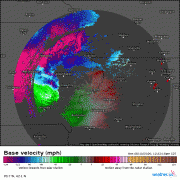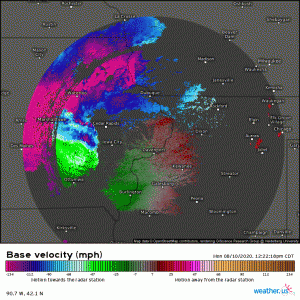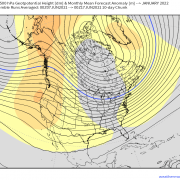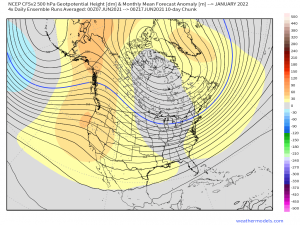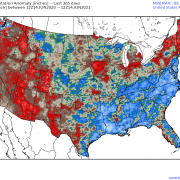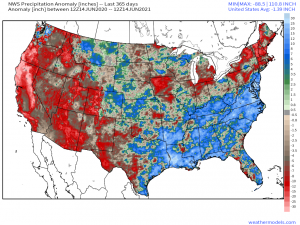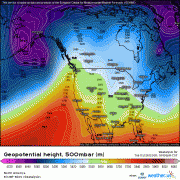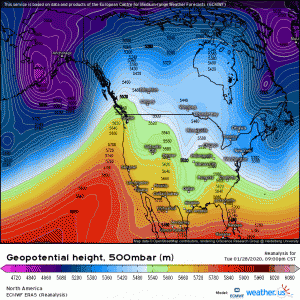Disastrous Tristate Flooding: A Reflection
Ida departed US soils in a manner similar to how it arrived: a ferocious mass of atmospheric moisture and energy, unleashing violent condensation byproducts upon populous cities. Because hurricanes, atmospheric machines of excess, derive fuel from such phase changes, it’s fitting that this condensation in catastrophic excess would bind the history of Ida to the history of the Northeast.
Many in the meteorological community expected an extraordinarily impressive display of tropical rainfall over the Northeast- I wrote about the threat extensively in blogs on August 30th and August 31st, for example. However, the prescience did not preclude the shock that enveloped forecasters as extremely heavy rain trained directly over the incredibly populous I-95 metropolis, a worst case scenario that sent walls of water surging through streets from Pennsylvania to Connecticut. Weather folk got this one right, but if anybody tells you that they expected 80% of Ida’s death toll to come from the Northeast, they are lying. I got this one right, and I was still blindsided forty six times today reading the news.
Forty six people lost their lives in a tragic flash flooding event unleashed by an interaction between hurricane Ida’s remnants and a cold front. I come from New Haven county, in south-central Connecticut, and this was easily the most devastating natural disaster since hurricane Sandy for the region where I grew up. But this was no 940mb low, no hurricane-blizzard, no Franken-Superstorm. No King Euro was crowned, no spaghetti was served, no camera crews were chased by surge. All to say, this wasn’t a disaster that intoxicated the nation- it was rain, a lot of it, sure, but rain.
There’s been a lot of buzz about this typical post-disaster catch phrase that’s been thrown around a lot over the last 36 hours: that nobody saw this coming. It’s a sentence that surely means something different to every single person who will never look at highways or subways in the same way again, but to me, it represents a collective shift in how people in this part of the country look at rain. How can somebody who only ever saw rain through the lens of yellow jackets and fireplaces and maybe floods in far away places like Houston and Tennessee suddenly accept a literally life-threatening run-in with four inches in one hour? People were blindsided by a reality that they were warned against- the two are not mutually exclusive. Heck, I was blindsided by a reality I predicted. Were you not?
If we want people to be prepared, not blindsided, we have to hope this is the beginning of a national reckoning about rain, the sort of disaster-type confrontation that we faced in 2005 about storm surge and in 2011 about tornadoes. A national reckoning that, perhaps, the process we treat as a side quest to the real hazard (Tornadoes!! Tornadoes!!, by the way, turn around don’t drown) is the real hazard. Because rain isn’t intoxicating, even I’ll admit. But it is ridiculously dangerous.
Just last week, a swath of Tennessee saw an astonishing 17″ of rain in 12 hours that killed 22. It was a repeat of a disaster in similar topography and social vulnerability in West Virginia in 2016. Coastal Texas and Louisiana have seen billion dollar disasters from flash flooding in so many of the past years that it feels like lazy writing on the universe’s part.
It’s probably around time we start seriously discussing flash floods like we do tornadoes, hurricanes, snowstorms. Because the last time this many people were killed by a tornado outbreak was May 2011. The last time this many people in the US were killed by a hurricane (outside of freshwater flash flooding) was Maria in 2017. And the last time this many people were killed in a US snowstorm was 1996.
So why, then, are SPC tornado high risks such a bigger affair than WPC flash flood high risks (NYC was in one on Wednesday). Why are NHC hurricane tracking maps burned behind our eyelids every fall, but not WPC quantitative precipitation forecasts every spring? We have tornado drills, hurricane plans, blizzard packs- but can you really name one singular piece of flash flood preparation advice aside from ‘turn around, don’t drown’?
The most haunting thing I’ve seen this week has been a video posted to twitter by storm chaser Nicholas Isabella. It depicts dozens of cars in bumper-to-bumper gridlock traffic stretching towards the horizon of a grainy, dark video. In front of these jam-packed commuters, ordinary people doing ordinary things, stretches an expansive pit of rising water. On all sides, the cement walls that line the tracks of NYC’s highways. This one rhyming catchphrase is not a substitute for being prepared, for acknowledging one of nature’s deadliest risks, for seeing flash flooding not as an aside but as the main hazard.
